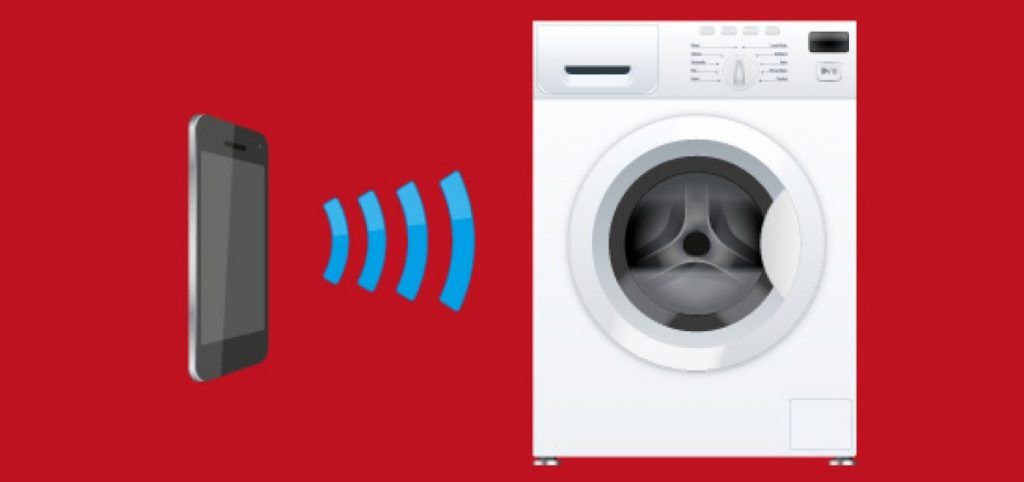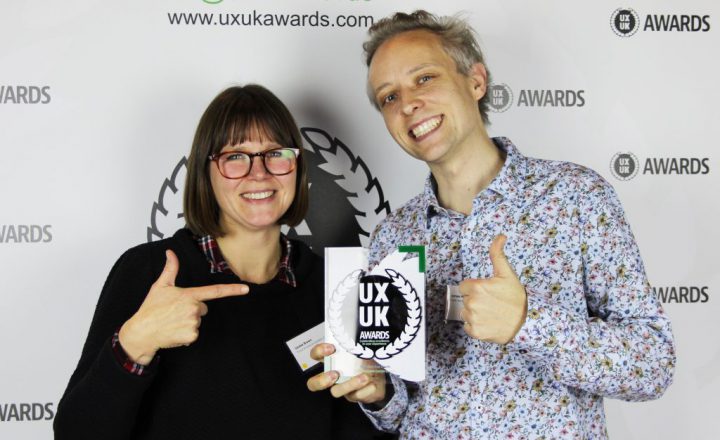
IoT is EVERYWHERE. It’s so cheap and easy to put a WiFi and/or Bluetooth chip in anything, that everyone is doing it to everything. Lightbulbs, smoke detectors, doorbells, speakers, fridges… you name it, someone is internet-enabling it.
My recent experience
The washing machine I bought recently is WiFi enabled (for some reason), though this was incidental to the features I bought it for. Out of genuine interest (I’m a geek) I began to set it up and see what science fiction features my washing machine could offer me.
- Getting started:
- I consult the printed manual that tells me I have to download an app. There’s a printed QR code.
- Now I have to figure out how to scan QR codes on my phone.
- I download and open the app
- The app wants a device type (washing machine) and model number… I don’t know the model number.
- The printed manual is for several different models of washing machine so no reliable model number there.
- I eventually found the model number hidden on a sticker on the washing machine.
- The app says I have to put my washing machine into some sort of pairing mode, and provides an illustration.
- “Press these two buttons on the washing machine at the same time”.
- The two buttons in the app’s illustration didn’t look like the buttons on my washing machine; the picture is for a different model, presumably.
- I pressed similarish buttons on the washing machine until something cryptic happened on the washing machine display. I’m not certain I’ve done it correctly.
- The app tells me to press ‘connect’.
- Nothing.
- The washing machine ‘pairing mode’ seems to have timed out.
- More fiddling with washing machine buttons… more cryptic washing machine display changes.
- Back to the app and press ‘connect’.
- OK, the app thinks it’s found my washing machine and is connecting.
- Endless spinning of a spinny wheel thing… Nothing.
Ultimately I failed to get my washing machine to play nice and have no idea if it was user error or not. After a couple of attempts to connect, I decided that any extra utility on offer couldn’t possibly outweigh the burden of troubleshooting that first handshake between the IoT device and its companion app, but I guess I’ll never know.
Just so we are all on the same page, what counts as an IoT device?
It’s a broad church but let’s quickly define some (rough) IoT characteristics:
- IoT devices will usually have a remote interface, usually an app on a computer or smart device, used for:
- Connection to and configuration of the IoT device.
- Accessing the internet-enabled features of the IoT device.
- The IoT device may have a non screen-based interface:
- Touch sensitive or hardware buttons.
- Rotating knobs or dials.
- Voice recognition.
- In my case, all the usual washing machine buttons and dials.
- The IoT device may have a visual display, but this is not usually used for configuring or accessing the device’s internet-enabled features:
- Lights denoting volume level or WiFi connection status.
- Digital display of temperature, time or photos.
- My washing machine tells me how long the program has to run etc.
- The IoT device’s scope of functionality is specialised, unlike a smart phone or computer e.g:
- Thermostat.
- Security camera.
- Lightbulb.
- Smart assistant.
- TV dongle.
- Remove the grime from my children’s school uniforms.
From a user experience (UX) perspective, IoT devices are very interesting because the user’s interaction with them is distributed across several different processes and interfaces; some software, some hardware, some owned by the manufacturer, some owned by Google or Apple:
- The ‘Out of box’ experience
- Physical unboxing
- Plugging in and powering up
- Written instructions
- Downloading the companion app from an app store
- Pairing the IoT device with the companion app
- Day to day operation of the companion app or web service.
- Day to day operation of the hardware device itself
- How it integrates into the user’s daily routine.
- Usability of an unfamiliar interface.
- Uncovery of features.
- Perceived utility of the features.
- BONUS UX: Linking the IoT service to another ‘smart’ service like Alexa or Google Home
There are also interesting relationships between the different places the user interacts with the IoT service, for example an app may tell you to press a button on the physical device, written instructions may tell you where to download an app from.
People will figure it out… right?
Often no. I’m pretty tech savvy and I’m sure, given time, I could get my washing machine’s IoT features working.
I know for certain that there are huge swathes of the washing machine owning population who wouldn’t stand a chance. I’m looking at you, Mum and Dad.
Ultimately, from unboxing to using the IoT device in its intended capacity, there’s a multitude of opportunities to either excel at delivering a user experience, or to fail at it. The only way to know for sure is to test the end-to-end experience, ensuring that all the moving parts mesh together properly.
Happily, our existing UX testing methodologies are flexible and platform agnostic, allowing us to tailor our research approach to the different parts of the IoT experience and gather the critical insight needed to deliver the experience users want.
Such a program of research could include:
- User testing the ‘out of box’ experience and pairing process:
- This would benefit from being considered a single extended task, with little to no moderator input as following instructions and troubleshooting is the user experience being studied.
- User testing the day to day operation of the companion app:
- The test plan can include several tasks (much like website testing) in order to ensure that all features of interest are covered in the user testing session.
- User testing the day to day operation of the device:
- Straight forward, task-based user testing sessions, either immediately after unboxing and connection or after the IoT device has been in operation for some amount of time.
- Ethnographic research such as diary studies to understand how that device is used in context over time.
This isn’t an exhaustive list of methodologies and any one of these specific moments in the user experience can be tested in isolation, but… it would be more insightful to study the whole end-to-end experience as there are those interesting experience crossovers between the different interfaces to consider.
Context is everything
IoT devices are everywhere; the home, the office, public spaces, our vehicles, on (and in) our bodies, and with each context comes a unique set of environmental wildcards that will factor in the overall user experience:
- Kitchens are steamy and covered in tomato sauce.
- Bedrooms are quiet, dark and private.
- Living and dining rooms seem to be always full of children who aren’t your own.
- Offices have that one person who always unplugs your thing so that they can plug in their thing.
- Vehicles are noisy and bouncy.
- Bodies are all different shapes and sizes.
- Routers that are sent to you by ISP’s have shamefully underpowered radios and should be immediately disposed of in favour of something that can actually send a WiFi signal more than 10 metres.
These are important, and often critical aspects of IoT user experience, so when you increase the contextual validity of your testing, you will gain more useful insight.
So how and where do you test?
While testing in native environments is a great idea in principle, these recently mentioned wildcards could easily derail a carefully planned user testing session and would require significant contingency planning for events such as failed internet or equipment, environmental disturbances and ‘unknown unknowns’.
Controlling variables is best done in a lab and our labs can be configured to approximate any number of IoT device-appropriate contexts. This allows our user experience consultants to:
- Provide the test participant with a familiar environment.
- Take advantage of our excellent IT support.
- Have in-situ AV equipment for recording the sessions, important for post-test analysis.
- Test more people, more efficiently.
- Allow clients to remotely watch the session.
Ultimately…
We all care about, and want to provide great user experience, so extensive, robust, contextually appropriate user testing should be conducted on the entire end-to-end IoT experience, otherwise we disappoint and alienate our users.
I find it hard to imagine that the designers of my washing machine’s IoT features user-tested their complete experience because it was so obviously lacking and there were so many low-cost opportunities to improve it.
3 out of 5 stars: Washes clothes just fine but could not connect to the app. Made me cross enough to write a blog about it
Can we help?
Interested in understanding, reviewing or developing and IoT device that delivers a great user experience? We would love to talk about how we can support you





